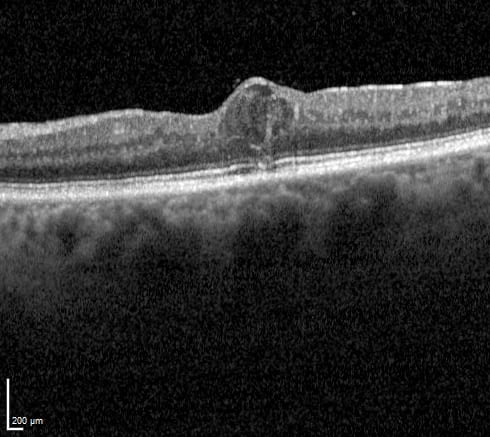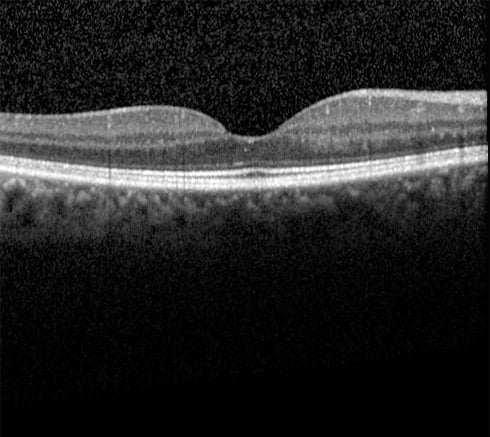How can diabetes affect my eyes?
Patients with diabetes have raised sugar in their blood. This can cause health problems in a number of ways, and your eyes are one part of your body that can be affected. Diabetes may cause cataracts, diabetic retinopathy and diabetic maculopathy.
What are diabetic retinopathy and diabetic maculopathy?
The retina has very fine blood vessels that supply it with nutrients and oxygen. In diabetes these blood vessels can become blocked or leak fluid. This is called diabetic retinopathy. The severity varies widely. In more severe retinopathy, fragile new vessels grow in the retina. These new vessels sometimes bleed, and the resulting blood in the eye can reduce vision.
The most important part of the retina is the macula. If the vessels supplying this area are affected it is called diabetic maculopathy.
Photograph of the retina showing multiple small red haemorrhages and white lipid deposits (exudates) due to leaking blood vessels.
OCT showing thickening of the central macular (fovea) due to leaking fluid (diabetic macular oedema). The fluid is seen as a cystic space that elevates the inner retinal surface.
Normal OCT.
What are the symptoms of diabetic retinopathy and diabetic maculopathy?
Diabetic retinopathy varies from mild to severe, as does diabetic maculopathy. Accordingly, patients may notice nothing, mildly blurred vision, or severe loss of vision.
What is the treatment of diabetic retinopathy and diabetic maculopathy?
Mild disease does not need treatment, but yearly review is very important, as retinopathy can progress unnoticed.
If you have more severe disease Professor Jackson will most likely suggest you book an appointment more frequently, based on the severity of your retinopathy.
Treatment may involve laser treatment to the retina or macula, injections into the eye (either anti-VEGF drugs or a steroid implant), or occasionally surgery.
Further information about diabetic eye disease and its management can be found in the patient information leaflet.


